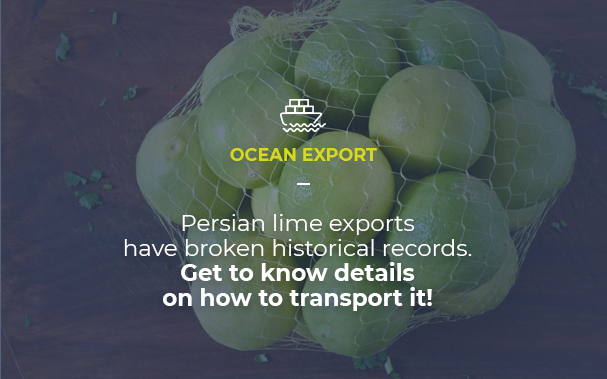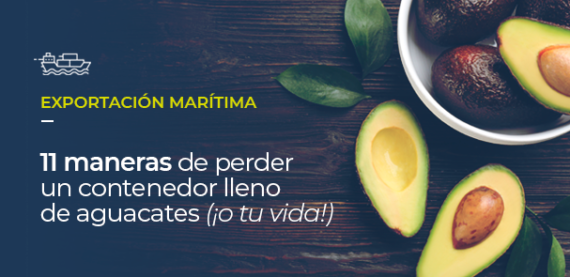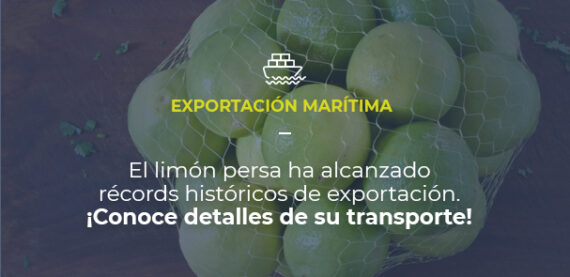Mexico is the second major lemon producer in the world. For 2020/2021, the forecast show that 852 thousand tons shall be exported, 6% more than in 2019. We have prepared a guide for you, exporter, with what you must definitely know to send this citrus everywhere in the world, specially by ocean freight.
Even with the COVID-19 pandemic impacts to the economy, in 2020 agricultural exports from Mexico registered a surplus of 4.72% compared to 2019. For example, the avocado, one of the stars of Mexican exports, closed 2020 with an increase of 0.14% and, in April of that year, experienced a historical record of 412 million dollars exported!
Citrus fruits, such as the Persian lime, also reached a historical record in September 2020: more than 90 million dollars were exported, after an impressive recovery of 162.18% compared to July, where only 34 million dollars were sent to other countries.
Persian lime, the star of Mexican exports
The Persian lemon, Persian lime, Tahiti lemon or “seedless lemon” (Citrus latifolia) doesn’t produce seeds and is less acidic than the Mexican lemon (sometimes called “Creole lemon”), another quite popular variety of this citrus.

Most Mexican Persian lime is produced in the state of Veracruz. In the 2019-2020 crop, Veracruz reached 21.2 tons per hectare and Oaxaca, 13.3T, according to data from the United States government. The Persian lemon trees in Veracruz are newer and more efficient, with 12 blooms or harvests per year.
According to data from the Mexican government, 91% of lemon exports correspond to the Persian lemon variety, while Mexican lemon exports only represented 4% of shipments to other countries.
Favored by its highly convenient climatic conditions to produce limes, Mexico has this citrus fruit throughout the whole year, with a high season from April to November.
It is important to consider is that it is not feasible to harvest the fruit in the rainy season: That water can generate black spots on the skin of the limes, which can decrease their commercial value or their export possibility to some countries, such as Japan, which has very high quality-standards and does not accept fruits with these characteristics.
Where should you export Persian limes to?
Mexico holds the second place in the ranking of lemon exporting countries in the world, with more than 15% of the global transit of the fruit – which is also their 15th most exported agri-food product.
Although the United States is the main importer of this citrus fruit –in 2019, exports to the US went above the 500 million dollars–, Mexico has 11 free trade agreements with 45 countries, which encourages exports to other international markets.
Click here to access a quick guide to USMCA (CUSMA) origin certification
In 2019, the exports reached 29 nations, 14 of which are regular customers. Northern Europe is an important destination for berries and for Persian lemons, too, followed by the Netherlands and France. Japan is also a large importer of Mexican Persian lime.
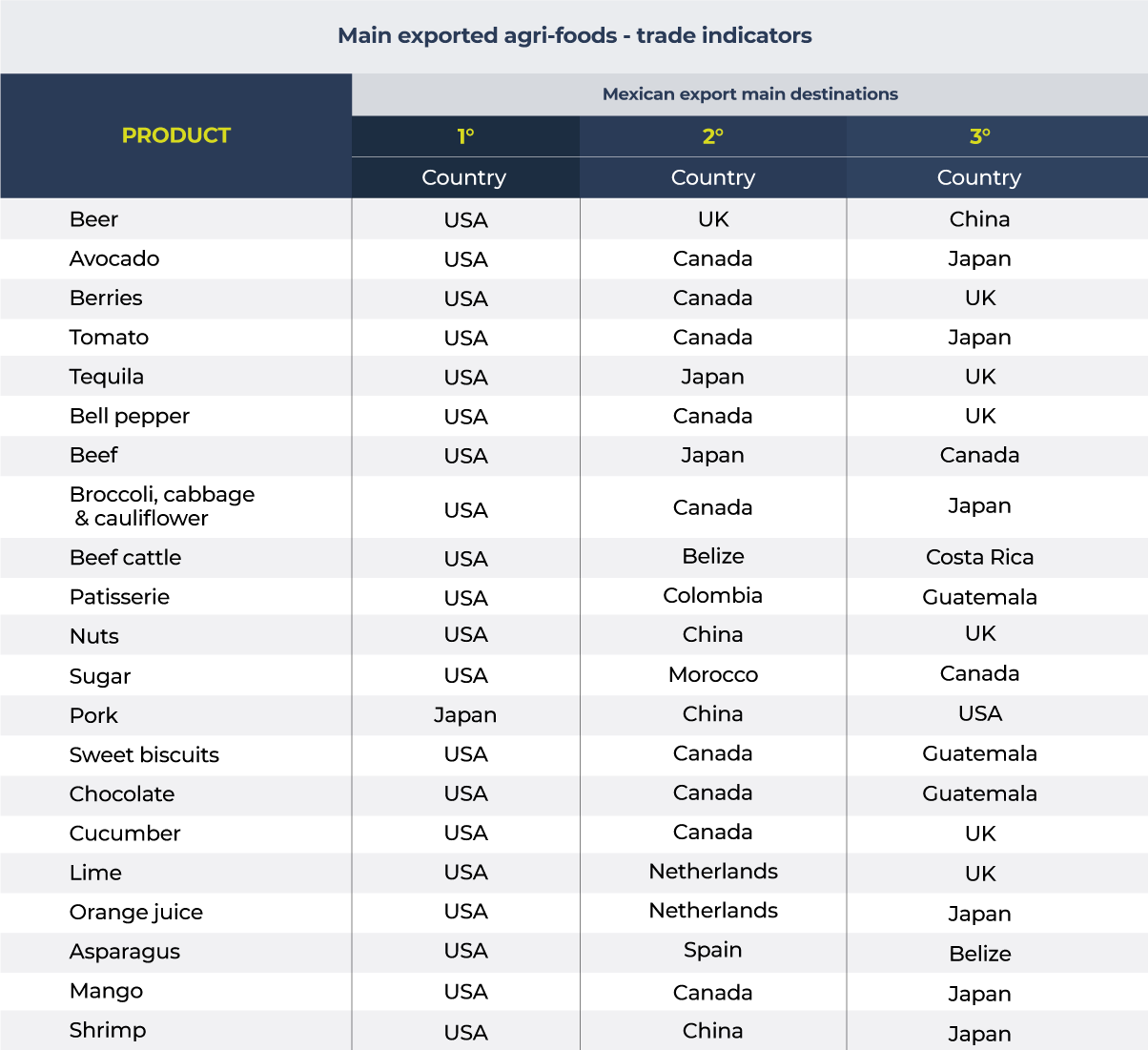
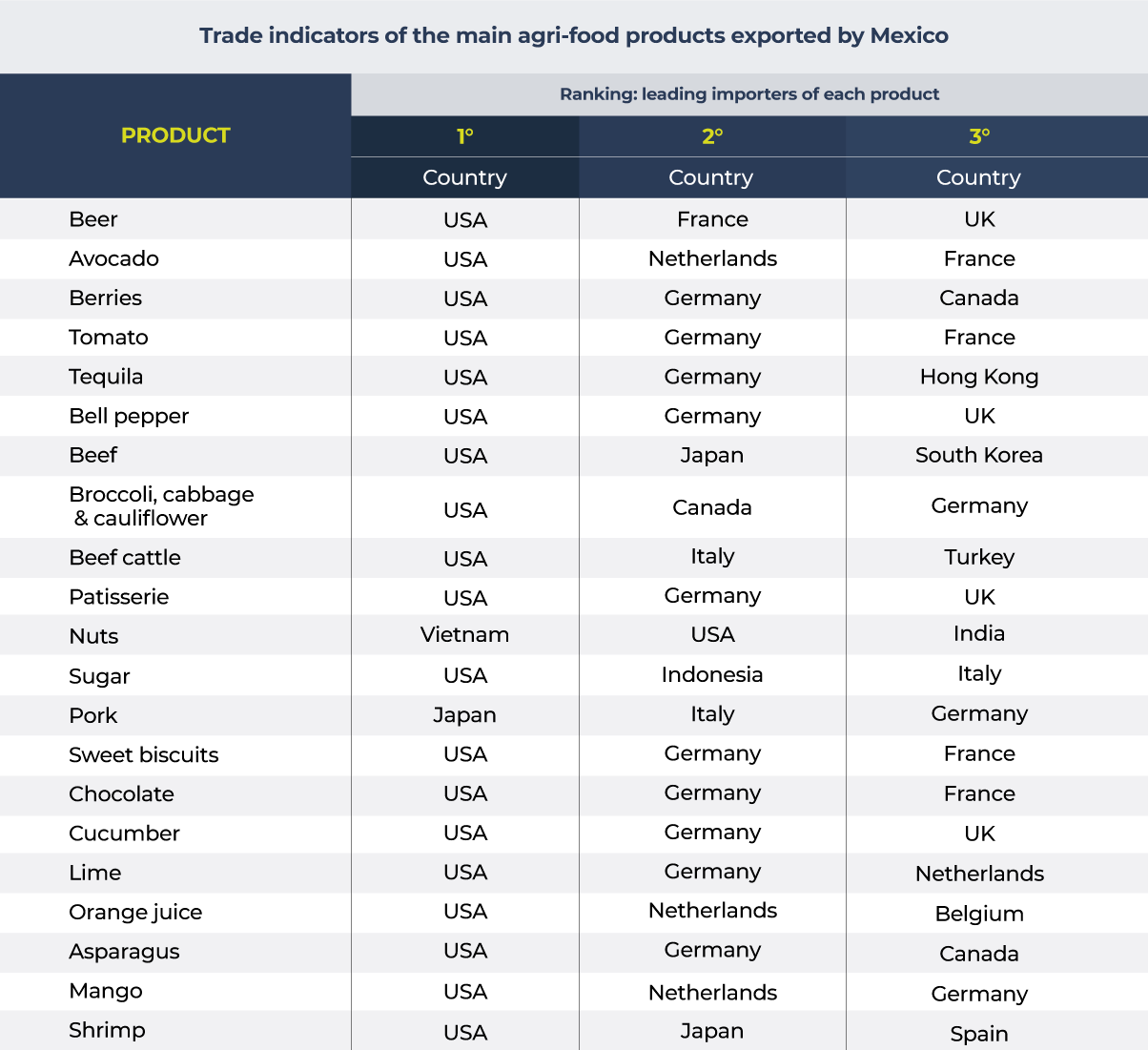
What is the best transport mode to export Persian lime?
Our Europartners Group ocean freight experts consider that this is the best mode to export this citrus fruit, due to the volumes that can be transported: 21.5 tons in a single shipment, which reduces costs, bringing the product at a competitive price at destination.
The most popular ports for export are Veracruz and Altamira, residual cargo is transported through the port of Manzanillo.
However, depending on the delivery times and the volume negotiated, air freight can also be considered. It is the preferred mode for the Japanese market, for instance, which import mainly through air routes.
To the United States and Central America, our ground freight experts can offer you competitive options.
Persian lemon export specificities
In this section, we listed a series of tasks that must be verified in the process of the Persian lime export.
- Taking care of the temperature all the way since the harvest
When the Persian lime is cut from its tree, it must be transferred directly from the field to the packer station, where it will go through a process to “lose the heat of the field”, naturally, in the shade.
When in the packer station, the Persian limes go through a process to select the fruits with export quality (get to know more on this process in the “fun facts” section below), as they pass through a refrigerated chamber, before entering the container, at 9°C (they cannot be placed in the special container at room temperature).
- Using standard refrigerated containers
Differently from other types of fresh fruit that need to go through the individual quick-frozen method (IQF) to be transported to other countries, Tahiti lime export by sea freight is carried out using standard refrigerated containers, since they don’t need a controlled atmosphere* or other additional technologies.
*It is a fundamental requirement to export avocados, for example.
- Never forgetting to ventilate the cargo
Like all fresh fruit, the Persian lime is a living organism that needs to exchange oxygen with the environment. Even though it is refrigerated, the container must offer a level of ventilation that enables the excess of ethylene and carbon dioxide produced by the fruit to be removed, so that it is not stifled while traveling.
- Checking the drains
Since the Persian limes travel at a temperature lower than outside, external ventilation enables moisture to enter the container.
This steam, in contact with the product and the walls of the equipment, forms small drops of water, which accumulate. To ensure that the excess water can drain, preventing the proliferation of any bacteria and without affecting the structure of the boxes, it is very important that the drains of the container remain open.
- Seeking for direct ocean freight routes
It is important to look for direct ocean freight routes without transshipment, to avoid the risk of losing a connection and diminishing the remaining days to sell the fresh Persian limes to the final consumers.
- Having a trustworthy customs agent
Working hand in hand with the packing company, the customs agent must take care of the phytosanitary and other documents for the export.
- Getting a good cargo insurance
Every fruit is considered a high value product, so, it is quite important that those cargo travel protect by a good insurance.
Why should you export with Europartners Group
From Europartners Group, we can provide you comprehensive solutions and route options. If problems such as lack of space, equipment or blank sailings are on the horizon, our teams work actively to find alternatives in our entire portfolio of shipping companies.
Additionally, we offer all complementary services (ground freight at origin, destination, customs advice and insurance), air freight options and ground expedited, if the cargo becomes urgent.
With +70 offices around the world and a broad network of agents in destination countries, we can review the cargo on its departure and upon arrival, to avoid conflicts with consignees.
Finally, another aspect of great value is that we can manage your direct contracts with shipping companies, working hand in hand with you to take advantage of all the details contemplated (and sometimes omitted), and take care of booking and follow-ups on behalf of your company, through our Ocean Carrier Management service:
Are you ready to take advantage of the excellent growth trend of the Persian lime export (and other agri-food products, too)? Contact us!
Fun facts:
- Two varieties of lemon have tariff fractions defined by the Mexican government: the Mexican lemon, Citrus aurantifolia (0805.50.01) and the Persian lime or “seedless” lemon, Citrus latifolia (0805.50.02). Other different varieties are classified as “diverse lemon” (0805.50.99).
- In the process of selecting Persian limes for export, those that are yellowish and the “pitted” ones (which present some damage from the harvest) are manually removed. Afterwards, the fruit is washed, disinfected with bactericide and waxed, to increase its shelf life and protect it from insects.
- The city of Martínez de la Torre, in the Mexican state of Veracruz, is considered the world capital of the Persian lime.
- In the citrus fruits’ family, the lime withholds the second place in commercial importance, both for its fresh consumption and for its industrial use. For example, limes are used to produce pharmaceuticals, essential oils (flavorings, perfumes and soaps), concentrated juices, and extracts.
The Persian lime is quite appreciated in many countries as an ingredient for desserts and cocktails. We invited the bartender Mica Rousseau to give us a recipe for a Margarita with Mezcal. Salud!
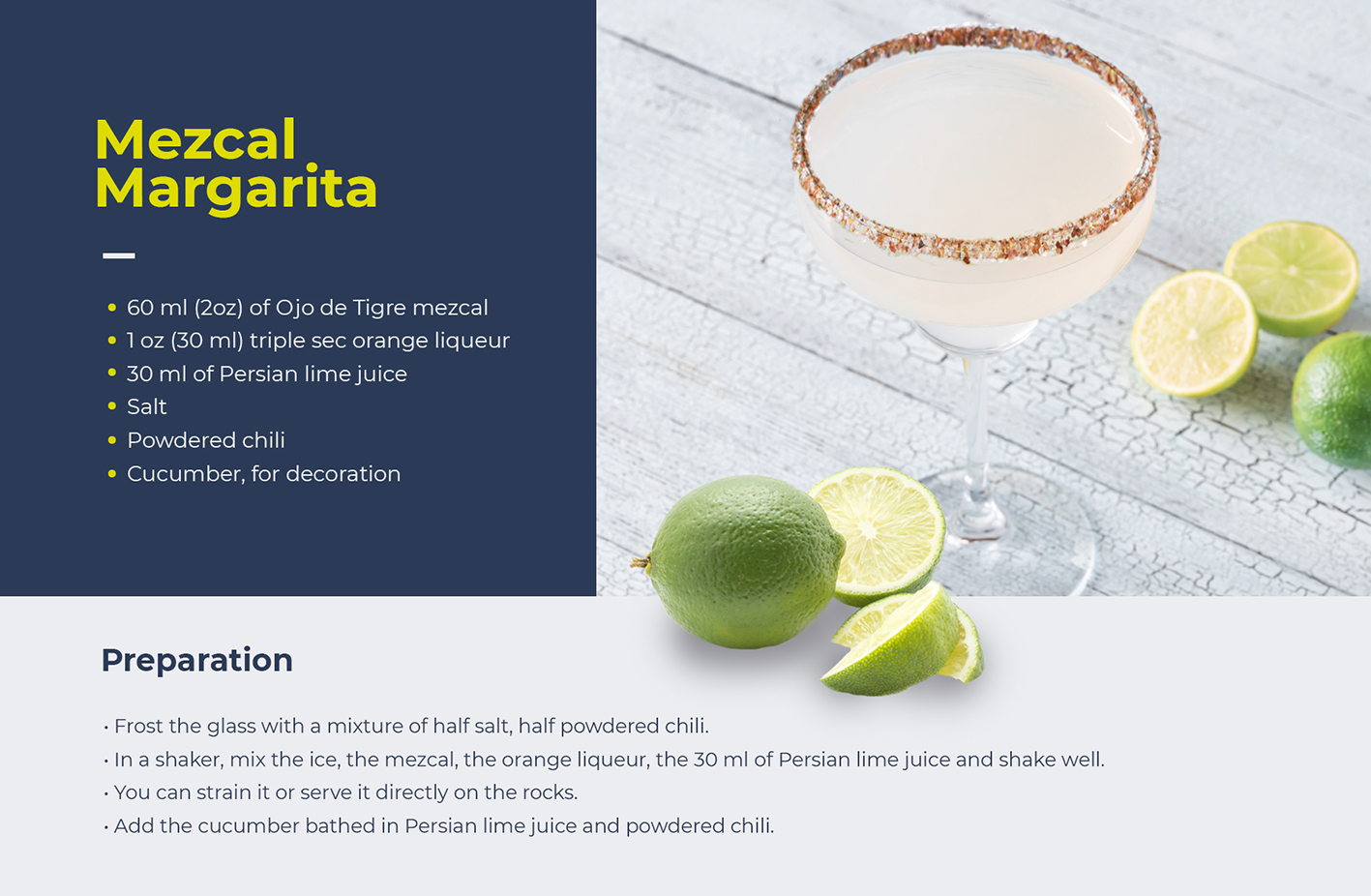
 ESPAÑOL
ESPAÑOL





